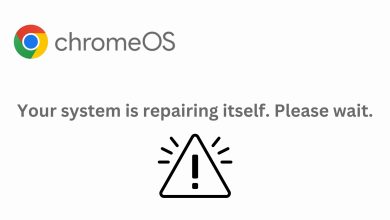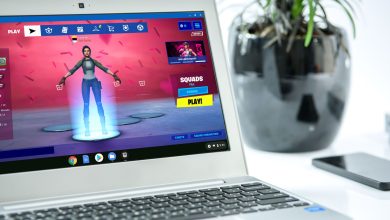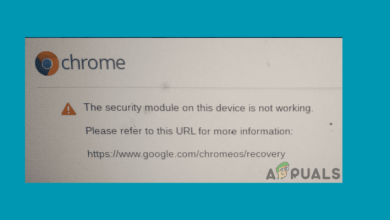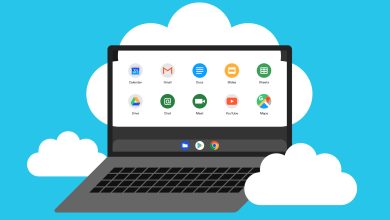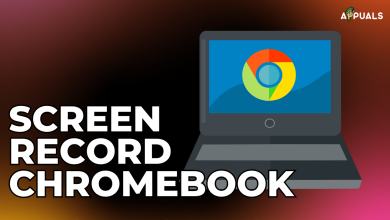How to Run Windows Software on a Chromebook
A Chromebook is a laptop or tablet running the Chrome OS as its operating system. Chrome OS is designed by Google and based on the Linux kernel operating system. It is based on free software Chromium OS and uses the Google Chrome web browser as its main user interface. As a result, Chrome OS supports web applications mostly data residing in the cloud rather than on the system itself. Since late 2017, all released Chromebooks can also run Android apps from the PlayStore.

Google has been updating its Chrome OS with new features since its release but it’s nowhere near to Windows, Mac or even some Linux distributions.
Chromebooks don’t run Windows software, normally which can be the best and worst thing about them. You can avoid Windows junk applications but you also can’t install Adobe Photoshop, the full version of MS Office, or other Windows desktop applications.
Luckily, there are workarounds to use Windows desktop programs on a Chromebook: either running them remotely, through Android, through developer mode or running them on your Chromebook itself.
Method 1: Windows Online Apps
If you just want to use the Office suite and don’t care about any of the other apps offered on Windows 10, this is the easiest option that can be done through the Chrome browser.
- Launch the Chrome browser and navigate to Microsoft Office site.
- Click on Use Free at Office.com

Use Free at Office.com - Click on Sign In

Sign In Office.com - Enter your Microsoft Account ID and Password
- After successful login, you will be taken to the office.com page

Applications portal of Office.com - Click on the relevant application that you want to use and you will be redirected to the website of that particular application and start using the online free application there.
Method 2: Chrome Remote Desktop
The Chrome Remote Desktop is an extension of Google Chrome that simply allows you to access another desktop while using your Chrome browser just like a virtual machine. It has an interface that shows an entirely different OS that you can use. The base of this method is that you need another Windows 10 system connected to the internet so you could link to it. That’s the way it will work. It won’t be possible in some situations, but if you have a Windows computer around, this can be a most effective workaround.
- On your Chromebook Navigate to Chrome Remote Desktop Website.

Chrome Remote Desktop Website - Click on Download Button

Download Chrome Remote Desktop - You will be redirected to Chrome Remote Desktop Webstore Page
- Click on Add to Chrome Button

Add to Chrome on Chrome Webstore - On next screen click on Add Extension

Add Extension to Chrome - Chrome Remote Desktop will be added to extensions and will be shown next to the address bar.

Chrome Remote Desktop extension next to address bar - Repeat the same process to your windows PC.
- On Windows PC you will be asked to download an installer. Download that installer and click on Accept and Install

- Click Yes

Open Chrome Desktop Remote Download - The installer will run and then you will be asked to enter the name of the device.

Choose the Name of Device for Chrome Remote Desktop - Enter the name as per your convenience for the device so you can easily remember and access it from Chromebook.
- You will be prompted to enter 6 digits pin, enter the pin as per your easiness.

Enter The PIN for Chrome Remote Desktop - Click start, and you will be directed to the access page, and your device name in the middle and status will be starting for some time and then will become online (if there is no problem). I have named it My PC.

Device Online for Chrome Remote Desktop - Now from Your Chromebook, go to Chrome Remote Desktop Site.
- Click on the remote support tab and in the Get Support Click on the Generate Code.

Generate Code for Remote Support - On your Windows PC, go to Chrome Remote Desktop Site.
- Click on Remote Support Tab and in Give Support section Enter the code generated in Step 15

Give Support on Remote Support Tab - And now you will be able to access your Windows computer and can use your favorite Windows applications.
Method 3: Emulators
An emulator is a hardware or software that enables one computer system (called the host) to behave like another computer system (called the guest). The host system can run software or use peripheral devices designed for the guest system through the use of an emulator.
Different software emulators can enable Chromebook to run windows. Examples are CrossOver by CodeWeavers and Exagear by Eltechs which is discontinued now. There are more Chromebook emulators are expected in the coming years.
So, for now, we have to go with CrossOver. CodeWeavers developed the CrossOver app as a solution to run Windows apps on other operating systems. In recent updates, CrossOver was given the ability to run Windows apps on Chromebook. Remember that the CrossOver Chrome OS version is not yet stable and is still in a beta phase of development. Something else that adds to the depth is the software requirements of employing this route. It can only run on an Intel-based Chromebook. All Android apps or devices will also have to be Android 5.x (or later)-compatible.
It will also need to have at least 2GB of RAM installed, and 200MB of storage space free for the installation, plus any additional room required for the apps you intend to use. Google created a list of Android supporting models, which is the way Windows apps work on Chromebooks, so check that before beginning any of the steps below.

Some Chromebooks, especially older ones, might have some trouble with this new app as the CrossOver for Chrome OS can run on an Intel processor.
Simply you will need one of the best Chromebooks that run Android apps to run the emulator without any lagging whatsoever,
Install CrossOver for Chrome OS
- Go to Profile Picture > Settings > Menu > Google Play Store
- Click Turn On if it hasn’t been already
- Open Play Store on your Chromebook
- And Download CrossOver from the Google Play Store
Prepare for Windows Program Installation
The CrossOver will automatically fetch the installation of some Windows software for you. But for most programs, it is a good idea to first download the offline installer of the desired program.

Whether it’s Microsoft Office, Adobe Photoshop, or even a small program like IrfanView, get the full offline installer from its site. If you can’t find it, go to Standalone Offline Installers and download it from there. Keep that downloaded installer in an easy-to-find location on your Chromebook.
Install Windows Programs on Chromebooks
- Run CrossOver for Chrome OS.
- Start typing the name of your desired app in the Search Applications box. The CrossOver will suggest names. Click Install on the correct one to get started.
- Depending on the program, CrossOver will now fetch the correct files online to install it.
- Go through the installation procedure as you would with any Windows program.

Windows Application Installing in CrossOver - Don’t change the destination folder! You are right, Chrome OS doesn’t have anything like “C:\Program Files\Paint.NET” but do not change the destination folder. Changing the destination folder routinely causes errors in CrossOver.
- Finally, Installation Finished will be shown once the whole process is complete. Don’t open the app yet even if you see a prompt for it
Install Unlisted Windows Programs on Chromebooks
The simple process expressed in step 4 works for some games and software, but not all. As already noted, it’s best if you downloaded an offline installer. In that case, the installation procedure is slightly different.
- Run CrossOver for Chrome OS.
- If CrossOver shows the name in search box install it, or click Install Unlisted Application when CrossOver could not find your desired app and prompts you.
- Enter the name of the program you are installing and click Select Installer.
- On the next screen, open the folder where you saved the offline installer on your hard drive. The CrossOver will list all Windows installers in that folder, so find the right one and click Install.
- Again, follow the installation procedure as you normally would, and don’t change the destination folder.
- Finally, Installation Finished will be displayed once the whole process is complete. Don’t launch the program just yet, even though you can see a prompt for it.
Run Windows Programs on Chromebook
- After installation of the app, close and restart CrossOver.

Search Apps in CrossOver - You’ll see your new programs in Installed Apps. On Clicking the program, you will see two options: Manage program or Launch program.
- Launch Program to use the Windows application as a Chrome app.
Limitations of CrossOver for Chromebooks
CrossOver for Chrome OS is in beta, so there could be some things that won’t work as advertised and expected. And even when they do, remember, you are essentially running Wine with a virtual Windows environment that will retain the look and feel of Windows software.
Method 4: Install Wine For Android
If all the above methods do not work for you, then it is time to move to deep waters. Chromebooks aren’t “just a browser”—they’re Linux laptops, as a result, you can install a full Linux desktop along with Chrome OS and switch between the two.
Wine is an open-source application that allows Windows applications to run on Linux and macOS. Wine is desktop software with no specific version of Wine designed for Chromebooks, but there are workarounds. Since Chrome OS is based on Linux, there are two ways to run Wine on your Chromebook: using the new Wine Android app, or by using Crouton to run it in Linux.
Remember that Wine in Linux would run smoothly on Intel Chromebooks but won’t run on ARM Chromebooks, and the Android version only supports Windows RT apps.
Wine also has an Android app that’s still currently in beta, but if you have a Chromebook that runs Android apps, it can allow you to run Windows programs without installing Crouton. It’s not yet available in the Google Play Store, so you’ll have to enable and use “Unknown Sources”. This will only work Google Play and Android Apps are supported by your Chromebook.
If you’re used to Android, you know that you need to enable the “Unknown Sources” option to install apps that aren’t available in Google Play. But in Chrome OS this option is not normally available and hidden.
Step 1: Change Release Channel to Developer
By default, all Chrome installations are on the stable channel—this includes browser installs on Windows, Mac, or Linux, as well as Chromebooks. And that makes sense. Google wants everyone to have the best experience possible right out of the gate.
If you’re not a “stable channel” kind of person, you can get access to all sorts of new stuff by switching to a different release channel. Right now, there are three primary channels:
- Stable: This is the default channel option. Choose this channel for rock-solid dependability.
- Beta: Offers access to newer features that are almost ready to be included in the stable channel. The beta channel allows you to test new features before they roll out to the masses, and is still mostly stable in our experience.
- Developer: Designed for developers to test new features, this is the most unstable of the three release channels, but it also offers the newest features quicker than the others. Only use this channel if you don’t mind a little instability in your life.
If you’re not scared away from changing channels yet, here’s how you can jump from the stable channel to something a little more rough around the edges.
First, click the “Customize” button (the one with three dots) in the upper right corner of the Chrome window, and then choose the “Settings” option.

On the “Settings” Window, click the Main Menu button i.e. the icon with three lines in the top left corner, and then choose “About Chrome OS.”

In the “About Chrome OS” window, Find “Detailed build information” and click this button.

Next, click the “Change Channel” button, and then choose the channel to the developer.

Step 2: Put Chromebook In Developer Mode
Now “Developer Mode” is to be enabled on your Chromebook. Chromebooks are locked down for security purposes and will only boot if the operating system is properly signed after checking the OS for tampering and preventing users and applications from modifying the Chrome OS. In Developer Mode you can disable all these security features, so you have a laptop to tweak and play with to your heart’s content.
When Developer Mode is enabled, you’ll be able to access a Linux terminal within Chrome OS and do whatever you like.
There are two quick warnings you should understand:
- Enabling and Disabling Developer Mode erases and Wipe data on Your Chromebook: So for the process of enabling Developer Mode, your Chromebook will be “power washed.” All the user accounts, their files, and data will be removed from your Chromebook. Of course, most of your data should be stored online, and afterward, you can access that data by logging into the Chromebook with the same Google account.
- Google Doesn’t Offer Support For Developer Mode: Developer mode is not officially supported by Google. It’s for the use of developers and power users. Google won’t provide support for this stuff. And the basic “This may void your warranty” warnings apply, so in other words in case of hardware failure in developer mode, just disable developer mode before getting warranty support.

Developer Mode Warning
To enable developer mode on modern Chromebooks, hold down the Esc and Refresh keys and tap the Power button to enter recovery mode. In Older Chromebooks, there were physical developer switches that you’ll need to toggle instead.
So, when At the recovery screen press Ctrl+D to agree to the prompt, and you’ll boot into developer mode.

Now, whenever you will boot your Chromebook, a warning screen will show. To continue boot either you have to press Ctrl+D or wait for 30 seconds so that warning could disappear.
This warning screen is to alert the user that the Chromebook is in developer mode and normal security measures are not intact.

Step 3: Enable Unknown Sources
Now apps from “Unknown Sources” will be enabled by opening the Chrome OS settings screen and find the “App Settings” link under Android Apps and click on it.

A new window will open showing Android’s Settings screen on your Chromebook. Click or tap the “Security” option.

Enable the “Unknown Sources” option under Device Administration. Now a warning will appear that will tell you to be careful about what you install.
What if the option of Unknown Sources does not appear? your Chromebook isn’t in developer mode. This option only appears here when your Chromebook is in developer mode, so try going through Step One again.

Step 4: Installation of the APK File
Now an app can be installed from an APK file. First, download the relevant version of the APK file and save it in your Downloads folder.
You might expect that you can simply double-click or load an APK file from Chrome’s Files application, but that doesn’t work. You’ll just see an error message saying “This file type is not supported.”

You’ll need an Android file management app to install APKs. Open Google Play and install any of the file management apps. We like Solid Explorer, but there are many other options. (For some reason, Android’s built-in file manager app won’t let you open and install APK files.)
Open your downloaded file manager app, open your “Download” folder through this app, and open the APK file. Select the “Package Installer” option on the app and you’ll be asked to install the APK.

Step 5: Linux Usage
After installation of Wine is completed, just open the app like normal to get access to a minimal, emulated version of Windows. It is still in beta, so the user experience may not be perfect. That said, I would recommend at least trying this option before going through the trouble of setting up Crouton if all you plan on doing is using it for Wine.
You now have a traditional Linux desktop. All that traditional Linux software is just an apt-get away in Ubuntu’s software repositories. Linux terminal utilities that you may want like Graphical utilities, local image editors, text editors, office suites and development tools, etc. are easy to install.
There’s one catch, though. On ARM Chromebooks, you’re a bit limited in what you can do. Some programs don’t run on ARM–basically, you won’t be able to run closed-source applications that haven’t been compiled for ARM Linux. Now you can access multiple open-source tools and desktop applications that can be recompiled for ARM, but closed-source applications won’t work, mostly on these machines.
Whereas you enjoy much more freedom on an Intel Chromebook where Steam for Linux, Minecraft, Dropbox, and all the typical applications could be installed that normally work on the Linux desktop.
You cannot run every Windows application of Wine as Wine is not perfect. You may not run some applications without manual tweaking. You have to consult the Wine application database for detailed information about applications and tweaks that are supported.
Method 5: Use Developer Mode and Install Wine for Crouton
Installing Linux on your Chromebook isn’t as simple as installing the standard Ubuntu system—at least not at the moment. You’ll need to choose a project developed especially for Chromebooks. There are two popular options:
- ChrUbuntu: ChrUbuntu is an Ubuntu system built for Chromebooks. It works like a traditional dual-boot system. You have to restart your Chromebook to change between Chrome OS and Ubuntu at boot time. You can install ChrUbuntu on Chromebook’s internal storage, USB device or SD card.
- Crouton: Croutonbasically uses a “chroot” environment to run both Ubuntu and Chrome OS at the same time. Ubuntu runs along with Chrome OS and you can switch between Chrome OS and Linux desktop environment with a keyboard shortcut. You can take advantage of both environments without rebooting your system.
Google has added native support for Linux apps directly to Chrome OS, and this feature is available on many Chromebooks. You don’t need Crouton to run Linux software anymore if supported by your Chromebook.
If your Chromebook does not support natively for Android Apps then We’ll use Crouton for this. It takes advantage of the Linux system underlying Chrome OS to run both environments at once and is a much slicker experience than traditional dual-booting. With Crouton You did not worry about the drivers of your hardware as it uses standard drivers for your Chromebook’s hardware.
With Crouton, you’re just running one operating system i.e. Linux but you’re running two environments on top of the OS i.e. Chrome OS and a traditional Linux desktop.
Step 1: Enable Developer Mode:
Enable Developer mode as explained in Method-4 of this article.
Step 2: Download and Install Crouton
Next, it’s time to download Crouton

- After the download is complete, open a shell
(Ctrl+Alt+T, type shell, and hit enter).
This will only work if Chromebook is in Developer Mode.
- Run the following command to Copy the installer to an executable place
“sudo install -Dt /usr/local/bin -m 755 ~/Downloads/crouton”
- Now that it’s executable, run the installer itself:
sudo crouton -t xfce
- Run the following command to install Crouton the easy way. This will installs Crouton with the Xfce desktop along with an encrypted chroot for security.
sudo sh ~/Downloads/crouton -e -t xfce
The installation process will be completed in a while.
Step 3: Usage of Crouton
- After completion of the installation process, either of the following commands could be run to enter your Crouton session (if installed Crouton with Xfce):

sudo enter-chroot startxfce4sudo startxfce4
Step 4: Switching Between Environments
To switch between the Chrome OS and your Linux desktop environment, use the following keyboard shortcuts:
- For an ARM Chromebook Which are in majority: Ctrl+Alt+Shift+Back and Ctrl+Alt+Shift+Forward. Note: back and forward browser navigation buttons on the top row, not the arrow keys.
- For an Intel x86/AMD64 Chromebook: Ctrl+Alt+Back and Ctrl+Alt+Forward plus Ctrl+Alt+Refresh
If you want to exit the chroot, just log out (using the “log out” option) of the Xfce desktop (or the Unity desktop, if you’re using that)–you should not don’t use the “shut down” as it will not log you out but in fact it will power the Chromebook down. You’ll then need to run the sudo startxfce4 command above to enter the chroot again.

If you’d rather install Ubuntu’s Unity desktop instead, use -t unity instead of -t xfce in the command above. It’s worth noting that Unity won’t run as smoothly on most Chromebooks’ limited hardware. Run the following command to see the list of installation types even installations without a graphical desktop:
sh -e ~/Downloads/crouton

Method 6: Run Linux Software in Developer Mode
The user of Chromebook may not need to run a Windows program at all as Windows programs have their own Linux versions and can be run on a Chromebook using Crouton’s Linux desktop e.g. if you want to run games on a Chromebook, Steam for Linux offers many games and its catalog is continually expanding. So, technically you are not “running Windows software”, but in some cases, it’s just as good.
Keep in mind that many Linux programs, such as Minecraft, Skype, and Steam, are only available for Intel x86 processors and can not run on devices with ARM processors.

Method 7: Use Developer Mode and Install a Virtual Machine
If Wine is not your piece of cake, you can also run a Windows virtual machine from the Linux desktop with Crouton. Similarly like the above-discussed option,
- Enable developer mode.
- To get a Linux desktop alongside your Chrome OS, install Crouton.
- Install a virtualization program like VirtualBox.
- Install Windows inside VirtualBox like normal
- Now with a keyboard shortcut, you can switch back and forth between your Chrome desktop and Linux desktop.

Important: Many virtual machine applications like VirtualBox would not run on ARM Chromebooks and will run on an Intel-based Chromebook to try this out.
Virtual machines are the heaviest way to do this and you will need a powerful Chromebook to drive the virtual machine software, Windows, and desktop applications. Newer Chromebooks with modern and fast processors may be able to handle this. Virtual machines will take up a lot of disk space and Chromebooks don’t often have, so, not a good combination.
